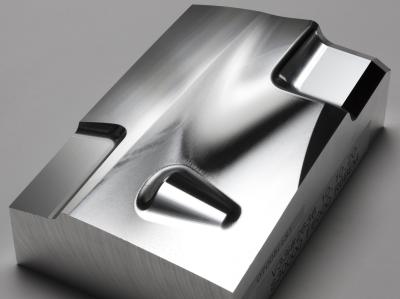
Makino introduces SGI.5, its latest version of Super Geometric Intelligence software for high-feed rate, tight-tolerance machining of complex 3D contoured shapes.
“SGI.5 is the next-generation Makino advancement, culminating a decade of leadership in high-speed, high-accuracy motion control in complex 3D contouring applications,” said Bill Howard, vertical machining product manager at Makino. “Continuous product development and technology innovations and advancements in Makino proprietary software and motion control/servo technology have altered the traditional speeds and feeds typically used to manufacture these types of parts.”
Depending upon the specific geometry of the application, SGI.5 can provide 20 to 60 percent faster cycle times while maintaining accuracy and surface finishes.
SGI.5 combines the rigidity of the machine structure, superior kinematics of the machine drive systems and the latest advancements in servodrive technologies with Makino’s proprietary software. The result is unmatched speed, high feeds and tight accuracies when executing NC programs with microblocks whose traverse movement value is 1 mm or less, according to the company. This is characteristic of the complex 3D free, curved surface shapes found in the die/mold, medical, aerospace and other high-performance milling applications. SGI.5 offers the following user benefits:
- Increased productivity by running higher feed rates
- Maintain tighter tolerances at higher feed rates
- Significantly reduced cycle times
- Increased profitability
Contact Details
Related Glossary Terms
- feed
feed
Rate of change of position of the tool as a whole, relative to the workpiece while cutting.
- gang cutting ( milling)
gang cutting ( milling)
Machining with several cutters mounted on a single arbor, generally for simultaneous cutting.
- milling
milling
Machining operation in which metal or other material is removed by applying power to a rotating cutter. In vertical milling, the cutting tool is mounted vertically on the spindle. In horizontal milling, the cutting tool is mounted horizontally, either directly on the spindle or on an arbor. Horizontal milling is further broken down into conventional milling, where the cutter rotates opposite the direction of feed, or “up” into the workpiece; and climb milling, where the cutter rotates in the direction of feed, or “down” into the workpiece. Milling operations include plane or surface milling, endmilling, facemilling, angle milling, form milling and profiling.
- numerical control ( NC)
numerical control ( NC)
Any controlled equipment that allows an operator to program its movement by entering a series of coded numbers and symbols. See CNC, computer numerical control; DNC, direct numerical control.

